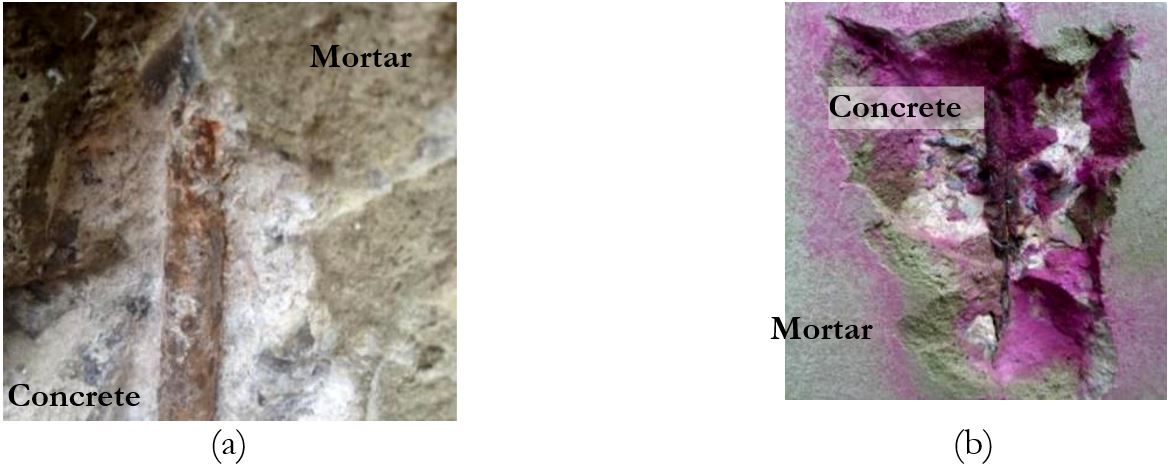abstract:
The heritage of modern architecture in exposed reinforced concrete has been shown pathological manifestations affecting the structural safety and functionality of the buildings. The manifestations are, primarily, associated with the steel corrosion; however published data obtained from site surveys, on the Brazilian architectural heritage and related to the issue, are still scarce in the literature. Thus, the aim of the study is to assess the current condition of the exposed concrete façades reinforcement of the Vilanova Artigas building, a Brazilian architectural heritage, opened in 1969. Legal restrictions limited the destructive tests and sampling areas. The history of the interventions, environmental aggressiveness and preliminary inspection (in the parent concrete and patch repairs) provided qualified information for analyzing in situ testing results. In the sampling areas physical, chemical and electrochemical tests were carried out. The façades surfaces are naturally porous, irregular, with concrete segregation and corrosion products stains; 24% of the concrete was replaced with proprietary mortar repair. In patch repairs, the average carbonation depth ranged from 3 to 29 mm, in concrete it ranged from 15 to 30 mm. The reinforcement cover ranged from 8 to 33 mm. Corrosion potential maps, with equipotential lines drawn at 50 mV intervals, indicated the corrosion-prone areas, where there is a concentration of lines with a variation equal to or greater than 150 mV. The presence of corrosion products, detected in the visual examination of the reinforcement under the patch repairs, validated the active corrosion state. The rough surface of the concrete, the low cover to depassivated reinforcement and the active corrosion state emphasize the need for monitoring the façades and the urgency of implementing a preventive maintenance plan, along with a conservation project in order to preserve the heritage values of the building.
Keywords:
heritage conservation; exposed concrete; carbonation; corrosion; electrochemical measurements

 Thumbnail
Thumbnail
 Thumbnail
Thumbnail
 Thumbnail
Thumbnail
 Thumbnail
Thumbnail
 Thumbnail
Thumbnail
 Thumbnail
Thumbnail
 Thumbnail
Thumbnail
 Thumbnail
Thumbnail







